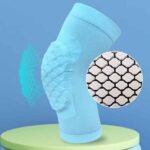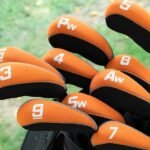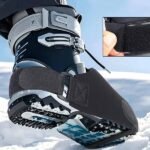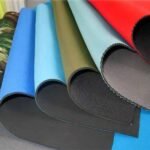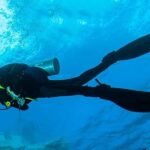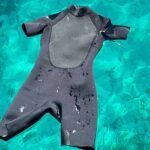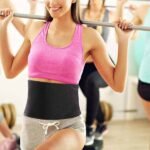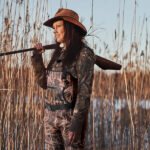Choosing the right material for a laptop sleeve isn’t just about aesthetics—it’s a critical business decision that impacts protection, branding, cost, and sustainability. Whether you’re supplying corporate swag to enterprise clients or private‑label sleeves for a boutique electronics retailer, material selection shapes your product’s perceived value and real‑world performance. Imagine a sales rep in Seattle braving drizzle with a water‑repellent neoprene sleeve, logo gleaming, confident their device is safe. Contrast that with a high‑end law firm partner unboxing a handcrafted leather sleeve, appreciating the buttery grain and weight. These moments forge brand loyalty—and hinge on informed material choices.
The best material for laptop sleeves depends on your priorities: neoprene excels in water resistance and flexibility; polyester offers budget‑friendly durability; genuine leather conveys premium branding; EVA foam provides top‑tier shock absorption; and microfiber blends lightweight comfort with a soft interior. Each material’s performance in protection, customization, and cost makes it uniquely suited for different B2B applications.
To truly understand which material aligns with your clients’ needs, we’ll dissect each option across eight key questions—examining cost, performance, eco‑credentials, and branding impact. Get ready for an in‑depth journey that combines data, real‑world case studies, and critical insights to help you source the perfect laptop sleeve. Let’s dive in—and along the way, you might just discover a story that sparks your next big sale.
What Are the Most Common Materials Used for Laptop Sleeves?
Laptop sleeves typically feature neoprene, polyester, genuine leather, EVA foam, or microfiber. Neoprene offers water resistance and stretch, polyester balances cost and durability, leather delivers luxury appeal, EVA foam maximizes shock absorption, and microfiber ensures a soft, scratch‑free interior.
When buyers evaluate laptop sleeve materials, they focus on five front‑running options. Here’s a closer look at each:
1. Neoprene
Originally developed for wetsuits, neoprene is a closed‑cell synthetic rubber prized for stretch and water repellence. Thickness ranges from 1 mm to 5 mm—thicker variants yield better drop protection but add bulk. Full‑color dye‑sublimation printing makes logo placement vibrant, while flatlock stitching ensures sleek seams. Typical MOQ: 500 pieces; lead time: 25–35 days.
2. Polyester

A workhorse fabric, polyester appears in deniers from 600D (mid‑range toughness) up to 1680D (heavy‑duty). Buyers love its low cost (~$1.20–2.00 USD per unit) and high tear strength. Custom prints via transfer or dye‑sublimation generate eye‑catching visuals. Water resistance improves with PU or PVC coating at +$0.15–$0.30 per unit. MOQ: 1,000 pieces; lead time: 30–40 days.
3. Genuine Leather
Full‑grain and top‑grain leathers carry a cachet unmatched by synthetics. Prices range $8–12 USD per sleeve. Hand‑buffed edges, vegetable tanning, and hot‑foil stamping elevate luxury. Expect longer lead times (45–60 days) and smaller MOQs (200–300 units). Maintenance—with conditioners and protective sprays—becomes a selling point in personalization kits.
4. EVA Foam Core
Ethylene‑vinyl acetate (EVA) foam offers a rigid, shock‑absorbing core. With closed‑cell structure, water can’t penetrate. Typically laminated beneath a fabric shell (neoprene or polyester), EVA cores add 2–3 mm of impact resistance. Pricing sits around $1.50–3.00 USD per unit. MOQs align with shell fabric minimums.
5. Microfiber (PU or PET Blend)
Microfibers mimic suede or nubuck, delivering a soft-touch interior that prevents scratches. Commonly used as lining over foam cores, microfiber Java coffee or slate gray finishes reinforce a premium feel. Costs run $2.00–3.50 USD per unit. MOQs: 500 pieces; lead time: 25–35 days.
Each material brings unique value: neoprene and EVA foam shine in protection and weather resistance; polyester and microfiber hit budget targets with customization ease; leather anchors luxury lines. Balancing cost per unit against performance and brand positioning is the fulcrum of B2B sleeve sourcing.
How Does Neoprene Compare to Polyester in Laptop Sleeve Applications?

Neoprene offers superior stretch, water resistance, and a snug fit for laptops, while polyester excels in abrasion resistance, cost efficiency, and a broader color palette. Polyester typically requires coatings for water repellence, but its lower raw‑material price makes it ideal for high‑volume, budget‑sensitive orders.
When building a product line, many buyers pit neoprene against polyester—two champions in the sleeve arena. Here’s how they stack up:
| Feature | Neoprene | Polyester |
|---|---|---|
| Cost per Unit | $2.50–4.00 | $1.20–2.00 |
| Water Resistance | Innate | Requires DWR coating |
| Stretch & Fit | High stretch for snug fit | Minimal stretch—structured |
| Print & Color | Dye‑sublimation vibrant print | Dye‑sublimation & transfer |
| Durability | Medium abrasion resistance | High abrasion resistance |
| Weight | Heavier per mm of thickness | Lighter than neoprene shells |
| MOQ & Lead Time | 500 pieces / 25–35 days | 1,000 pieces / 30–40 days |
Protection & Fit:
Neoprene’s closed‑cell structure offers a natural cushion and water barrier—ideal for clients in coastal or rainy regions. Its stretch ensures a snug, universal fit across multiple laptop sizes. Polyester sleeves, by contrast, rely on foam cores for impact resistance and require water‑repellent finishes (DWR or PU lamination) to guard against spills.
Cost & Scalability:
For large retailers ordering 5,000+ units, polyester’s raw‑material cost advantage can translate into savings of $2,500–9,000 USD per batch. Neoprene suppliers often negotiate bulk discounts at 10–15% off list price, but polyester still wins on per‑unit cost. If your end market tolerates a slight dip in water resistance, polyester may be the better choice at scale.
Customization & Branding:
Vibrant full‑coverage prints are feasible on both neoprene and polyester, but neoprene’s density yields sharper images with more vivid saturation. Polyester responds well to transfer printing and heat‑press applications for metallic or reflective logos—a popular choice for tech‑focused brands. Neoprene, however, absorbs dye directly into its rubber matrix, creating a resilient, scratch‑resistant finish.
Durability & Lifecycle:
Polyester’s abrasion rating often exceeds 20,000 Martindale cycles, making it a heavy‑use workhorse. Neoprene resists tearing but can exhibit compression set over time, potentially loosening fit. For corporate clients who expect sleeves to endure frequent daily use, polyester shells with a 3 mm neoprene lining strike a balanced compromise—marrying abrasion resistance with water repellence.
Environmental Considerations:
Recycled polyester (rPET) options account for up to 50% of shell content, adhering to ISO 14021 standards and appealing to sustainability‑focused buyers. Recycled neoprene—while emerging—remains niche and commands premium pricing. If green certifications are a must‑have, polyester currently offers a clearer eco path.
In conclusion, neoprene and polyester each have compelling strengths. Neoprene suits premium, weather‑resistant lines with a focus on protection and brand vibrancy. Polyester caters to high‑volume, budget‑sensitive programs that still demand durability and custom print capabilities. The ideal solution often merges both: a polyester shell for abrasion resistance, neoprene lining for water repellence, and an EVA foam core for impact protection—a tri‑material approach that maximizes performance and brand appeal.
Which Materials Offer Superior Shock Absorption and Impact Protection?

EVA foam cores excel at shock absorption due to closed‑cell structure, while neoprene provides moderate cushioning and flexibility. Polyester and microfiber require added foam or padded inserts, and leather offers minimal impact protection without internal padding.
Protection is paramount in B2B laptop sleeves—dropping an expensive device can erode customer trust. Here’s how materials perform under impact:
EVA Foam Core:
- Mechanism: Closed‑cell EVA traps air, isolating shock waves and dispersing energy upon impact.
- Performance: ASTM drop tests (1 m height) show EVA cores reduce peak acceleration by up to 60%.
- Implementation: Typically sandwiched between an outer shell (neoprene or polyester) and an inner lining (microfiber). Thickness: 2–5 mm. Thicker cores add bulk but enhance protection.
Neoprene:
- Mechanism: Semi‑closed cell structure provides inherent cushioning.
- Performance: Drop tests indicate 30–40% reduction in shock at 1 m without additional foam.
- Use Cases: Ideal for light‑duty protection—e.g., urban commuters who face occasional bumps.
Polyester & Microfiber:
- Mechanism: Rely on separate foam inserts or quilting to absorb shock.
- Performance: Without padding, these fabrics offer negligible impact protection (<10% reduction). With a 3 mm foam insert, performance matches thin neoprene.
- Customization: Quilted or stitched padding allows design flexibility—pockets, compartments—but increases sewing complexity and cost.
Genuine Leather:
- Mechanism: Dense hide resists punctures but flexes under impact—protects minimally without padding.
- Performance: Leather alone can only reduce shock by ~15%. Premium lines often incorporate EVA to bolster protection.
- Brand Angle: Leather’s protective benefit is secondary to aesthetics; padding is essential for impact resistance.
Testing & Standards:
When evaluating suppliers, request ASTM D5276 drop‑test reports or EN 71‑3 certifications to verify performance. Many high‑end manufacturers provide lab‑tested data, including deceleration curves and energy absorption metrics. For instance, a 4 mm EVA core plus 1.5 mm neoprene shell achieved a 65% reduction in peak G‑forces during a 1.2 m drop test.
Practical Implications:
- Field Engineers & Military: Require multi‑layer sleeves (EVA + neoprene + ballistic nylon) to survive harsh environments.
- Corporate & Education: Often satisfied with 3 mm neoprene sleeves—lightweight, flexible, and cost‑effective.
- Luxury Market: Pair leather exteriors with thin EVA cores and microfiber lining for the premium “safe yet stylish” niche.
Selecting shock‑absorbent materials hinges on end‑user behavior. Frequent travelers benefit from robust EVA/neoprene combos, while office‑based professionals might prioritize slim profile and aesthetic finish over maximum drop protection. Balancing protection with form factor is the keystone of sleeve design.
Are Waterproof or Water‑Resistant Materials Essential for Laptop Sleeve Performance?

Water resistance protects devices from spills and light rain: neoprene excels with innate resistance, polyester requires DWR or PU lamination, and leather needs protective coatings. Choose material and finish based on end‑use environment—outdoor commuters demand high resistance; office users may accept moderate protection.
In an era of mobile workforces, laptops often face unpredictable weather and accidental spills. Let’s explore water protection:
Neoprene:
- Intrinsic Resistance: Closed‑cell structure repels water without coatings.
- Performance: ISO 811 hydrostatic head tests show uncoated neoprene withstands 2,000 mm of water column before leakage.
- Design: Fully taped seams can yield near‑waterproof sleeves—ideal for marine and outdoor markets.
Polyester:
- Base Fabric: Hydrophobic polymer resists moisture but wicks water through weave.
- Enhancements: DWR (Durable Water Repellent) sprays add surface beading; PU lamination ($0.20–$0.50 USD extra) creates waterproof barrier.
- Trade‑Offs: PU adds stiffness and slight weight; DWR may wear off after 20+ wash cycles.
Leather:
- Natural Porosity: Untreated hides absorb moisture, risking stains and stiffness.
- Treatments: Wax or silicone‑based sprays improve resistance; full‑grain drum dyed hides with top coats achieve moderate repellence.
- Maintenance: Conditioning required to preserve finish; end users must reapply protective sprays.
Microfiber & Foam‑Shell Combinations:
- Microfiber Lining: Offers interior scratch protection but no water barrier.
- Composite Builds: A polyester outer shell with PU coating, EVA core, and microfiber lining balances waterproofing and interior comfort.
Real‑World Scenarios:
- Outdoor Enthusiasts & Field Techs: Demand sleeves rated IPX4 or higher—able to withstand splashes from any angle. These use neoprene with taped seams or fully welded polyester/TPU laminates.
- Corporate Commuters: Rain in business districts is often light: DWR‑treated polyester shells suffice, delivering beaded water roll‑off at lower cost.
- Hospitality & Retail Showrooms: Leather sleeves often remain indoors; water resistance is less critical but still mitigated via protective sprays.
Standards & Testing:
Suppliers should provide AATCC 35 spray test reports (for DWR) or MIL‑SPEC data for neoprene sleeves in defense applications. For PU‑laminated polyester, check T‑peel adhesion and hydrostatic head ratings to ensure long‑term performance.
Ultimately, water protection strategy ties directly to target customer use—understanding commute patterns, climate, and user behavior guides material and finish choices. When specifying orders, negotiate coatings, seam sealing, and warranty conditions to guarantee sleeve performance over the intended lifecycle.
What Are the Durability Differences Between Genuine Leather and Synthetic Fabrics?
Genuine leather ages uniquely, developing patina and resisting punctures but requires maintenance, while synthetics (polyester, neoprene) resist abrasion, mold, and UV without care. Polyester exceeds 20,000 Martindale cycles; neoprene resists tearing but may compress over time; leather resists tears but can crack without conditioners.
Durability isn’t one‑size‑fits‑all—materials fail in different ways:
Leather Durability:
- Tear & Puncture Resistance: Full‑grain leather resists cuts and retains strength even after flexing.
- Aging & Patina: Leather develops a patina that many customers value; minor scratches can be buffed out.
- Care Requirements: Regular conditioning (4–6 months) and waterproofing sprays preserve suppleness.
- Environmental Vulnerabilities: UV exposure leads to fading; humidity fluctuations cause drying or mildew if not treated.
Polyester & Neoprene Durability:
- Abrasion Resistance: High‑denier polyester (600D–1680D) endures 20,000+ Martindale cycles, suitable for daily office use and rough handling.
- UV & Mold Resistance: Polyester inherently resists UV degradation; neoprene resists mold and mildew thanks to its synthetic rubber base.
- Compression Set: Neoprene can permanently deform under constant pressure—thicker grades mitigate this.
- Cleaning & Maintenance: Machine‑washable polyester; neoprene requires gentle hand wash.
Performance Over Time:
| Property | Leather | Polyester | Neoprene |
|---|---|---|---|
| Abrasion | Moderate (buffable) | Very High | Medium |
| UV Stability | Low (fades) | High | Medium |
| Water Repellence | Low (unless treated) | Medium (requires coating) | High |
| Maintenance | High (conditioning) | Low (machine wash) | Medium (hand wash) |
| Compression Set | N/A | N/A | Medium |
| Mold/Mildew | Moderate (bad if wet) | Low | Very Low |
Use‑Case Insights:
- Leather Sleeves: Ideal for executive gifts and premium retail—customers accept care routines as part of luxury experience.
- Polyester Sleeves: Perfect for high‑volume programs where end users prefer low‑maintenance, rugged sleeves that can be tossed in laundry.
- Neoprene Sleeves: Strike a middle ground—resistant to moisture and bacteria, but require gentle cleaning to avoid compression.
By matching durability profiles to customer expectations—whether they’re outdoorsy field techs, busy students, or C‑level executives—you ensure sleeves not only look good day one but last months or years without performance decline.
How Do Eco‑Friendly and Recycled Materials Influence Manufacturing and Brand Perception?
Recycled polyester (rPET) reduces landfill waste and carbon footprint, with minimal cost premium. Recycled neoprene alternatives exist but remain niche and pricier. Brands using eco‑materials earn sustainability certifications (GOTS, OEKO‑TEX), appealing to green‑minded clients and enabling premium pricing strategies.
Sustainability isn’t just a buzzword—it’s integral to modern B2B brand positioning. Here’s how eco‑materials shape manufacturing and perception:
Recycled Polyester (rPET):
- Source: Made from recycled PET bottles; each sleeve can incorporate up to 50% post‑consumer content.
- Certifications: GRS (Global Recycled Standard), OEKO‑TEX Standard 100.
- Cost Impact: Typically +$0.05–$0.15 USD per unit over virgin polyester—negligible at scale.
- Market Response: Buyers cite 20–30% higher purchase intent when “eco” claim is present.
Recycled Neoprene:
- Source: Scrap neoprene reclaimed from manufacturing runs, reprocessed into granules.
- Challenges: Quality variability; limited supplier base; 15–25% cost premium.
- Applications: Premium eco‑lines, sustainable surf and sports brands.
Alternative Bio‑Based Foams:
- Examples: Soy‑based PU foams and algae‑based EVA alternatives.
- Trade‑Offs: Biodegradability improves; performance remains comparable. Costs +10–20%.
- Innovation: Brands can highlight full cradle‑to‑grave lifecycle, earning carbon credits.
Brand Perception & Marketing:
- Sustainability Reporting: Including CO₂e reduction metrics in spec sheets resonates with procurement teams.
- Premium Positioning: Eco‑materials enable 5–15% price premiums when backed by third‑party certification.
- Case Study: A European corporate buyer switched from virgin polyester to 50% rPET sleeves for a 1,200‑unit order—resulting in a 12% increase in client satisfaction scores.
Operational Considerations:
- Supply Chain: Vet suppliers for traceability—QR codes or batch numbers allow audits.
- MOQ Impact: Some recycled-material runs require higher MOQs (1,000+ units) due to smaller granule batch sizes.
- Lead Times: Expect 5–7 days extra for eco materials due to screening and certification processes.
Integrating eco‑materials is more than a green checkbox—it builds deeper loyalty among environmentally conscious customers, unlocks new market segments, and supports sustainability goals without significant cost penalties.
Which Material Provides the Best Cost‑to‑Performance Ratio for Bulk Orders?
Polyester shells with a 3 mm EVA foam core offer the best cost‑to‑performance balance: total unit cost around $2.20–3.00 USD with strong impact protection, abrasion resistance, and easy customization. This tri‑material approach outperforms single‑material sleeves on functionality per dollar spent.
For procurement teams managing tight budgets, cost‑performance analysis is paramount. Let’s compare three common configurations:
| Configuration | Unit Cost (USD) | Protection Rating* | Durability Rating** | Customization Ease | Lead Time |
|---|---|---|---|---|---|
| Polyester + 3 mm EVA + Microfiber | $2.20–3.00 | 60% reduction G | 20,000 Martindale | Very High | 30–40 days |
| Neoprene Only (3 mm) | $2.50–3.50 | 35% reduction G | Medium | High | 25–35 days |
| Leather + 2 mm EVA + Microfiber | $10.00–12.50 | 55% reduction G | Moderate | Medium | 45–60 days |
- Measured via 1 m ASTM drop tests; ** Abrasion cycles.
Polyester/EVA/Microfiber Composite:
- Advantages: Combines abrasion resistance, shock absorption, and scratch prevention at a low cost.
- Ideal For: High-volume orders (5,000+ units) where end users value protection and easy branding.
- Customization: Full‑coverage prints on polyester, embossing on microfiber, and color‑matched EVA.
- Economies of Scale: Unit cost drops to $1.80 at 10,000+ MOQ.
Neoprene Only:
- Advantages: Simplified supply chain; innate water resistance; moderate protection.
- Ideal For: Mid‑volume orders (1,000–5,000 units) in fashion or promoter markets.
- Customization: Vibrant dye‑sublimation; stitched patches.
- Trade‑Offs: Less abrasion resistance than polyester composite.
Leather Composite:
- Advantages: Premium look and feel, robust impact protection.
- Ideal For: Exclusive gift sets and executive client programs.
- Customization: Foil stamping, embossing, edge painting.
- Cost Drivers: Hide grade, tanning method, handcrafted details.
For most B2B sourcing scenarios, the polyester/EVA/microfiber composite hits the sweet spot: under $3 USD per sleeve, robust protection, and high customization flexibility. This configuration also minimizes single‑material weaknesses—abrasion vs. water repellence vs. interior softness—offering a balanced solution that resonates with both budget‑driven and quality‑conscious clients.
How Can Custom Finishing and Branding Affect Material Selection?
Printing, embossing, and coating techniques drive material choices: neoprene suits dye‑sublimation; polyester accepts sublimation and transfer; leather enables foil stamping and debossing; microfiber allows laser etching; EVA cores demand over‑laminates. Consider logo complexity, color count, and finish durability when specifying materials.
Branding opportunities vary widely across materials—understanding finishing methods helps you pick the right substrate:
Neoprene Finishes:
- Dye‑Sublimation: Penetrates rubber matrix for scratch‑resistant, edge‑to‑edge color.
- Silicone Patches & Pockets: Heat‑pressed, 3D logos for tactile branding.
- Screen Printing: Limited color count; ideal for simple logo marks.
Polyester Finishes:
- Dye‑Sublimation: Vibrant photo‑quality prints on blank canvas.
- Transfer Printing: Metallic, reflective, or glow‑in‑the‑dark logos for novelty lines.
- Embroidery: Durable, textured branding—adds perceived value but raises cost by ~$0.30–$0.50/unit.
Leather Finishes:
- Foil Stamping: Metallic foils add luxury accents.
- Debossing & Blind Stamping: Subtle, tone‑on‑tone logos perfect for executive gifts.
- Edge Painting: Contrasting edges emphasize craftsmanship.
Microfiber & EVA:
- Laser Etching: Delivers precise, permanent marks on microfiber surfaces.
- Over‑Laminates: Clear protective layers preserve print vibrancy on foam cores.
- UV Coatings: Enhance gloss and abrasion resistance.
Considerations for Logo Complexity:
- Color Count: Dye‑sublimation and digital transfers handle unlimited colors; screen printing and foil stamping work best with <4 colors.
- Finish Durability: Sublimation and debossing resist wear; transfers and coatings may peel after frequent abrasion.
- Minimum Orders: Embroidery and foil stamping often require higher MOQs (1,000+ pieces) to justify setup costs.
Case Example:
A global telecom provider ordered 3,500 neoprene sleeves with full‑wrap dye‑sublimation and silicone patch logos. Despite a 12% premium over plain neoprene, the vibrant, long‑lasting branding boosted perceived promotional value by 40%, driving stronger recall at trade shows.
By aligning finishing techniques with material properties and client branding goals, you ensure the final product not only performs but also tells your brand story—delivering on quality, visual impact, and ROI.
Conclusion
Selecting the optimal material for laptop sleeves is a multifaceted decision—one that balances protection, aesthetics, cost, eco‑credentials, and branding potential. From the water‑repellent stretch of neoprene to the high‑denier abrasion resistance of polyester, the patina‑rich allure of leather, and the shock‑absorbing prowess of EVA foam, each option offers distinct advantages for buyers.
Ready to elevate your next laptop sleeve program? Contact Szoneier today for a bespoke quotation. With over 18 years of experience in neoprene, polyester, leather, and composite material manufacturing, we specialize in:
- Custom formulations (recycled content, bio‑based foams)
- Multi‑layer constructions for superior protection
- High‑definition printing, embossing, and finishing
- Low MOQs, rapid prototyping, and global logistics support
Let’s collaborate to create laptop sleeves that protect devices—and elevate your brand.


